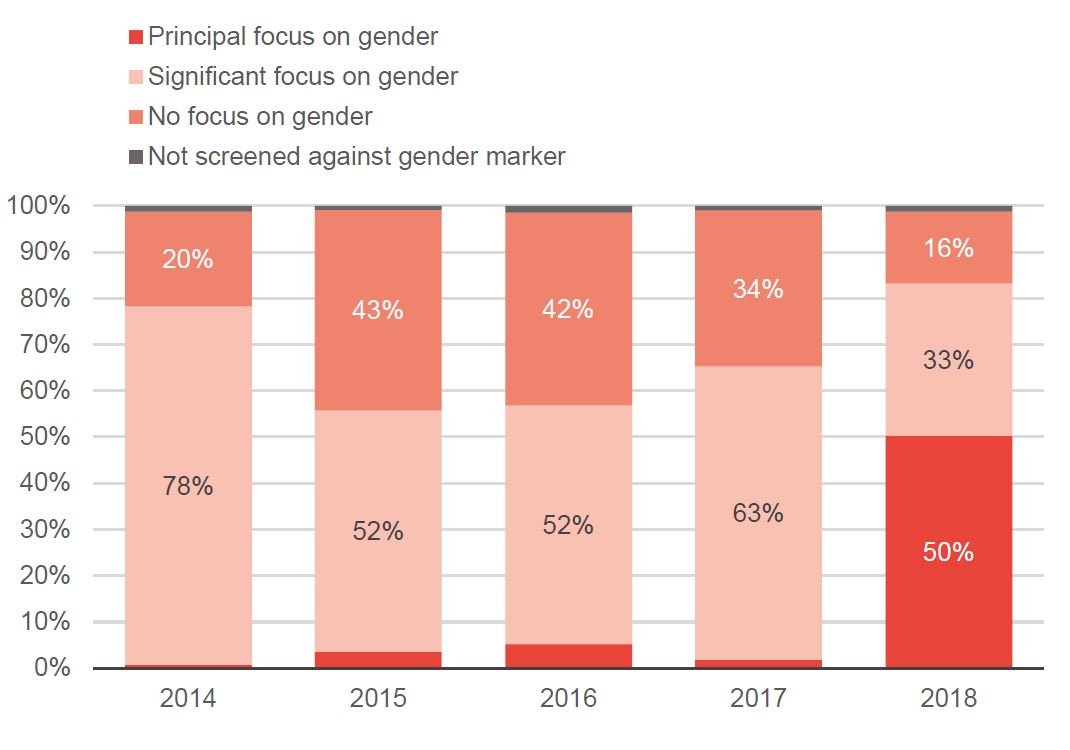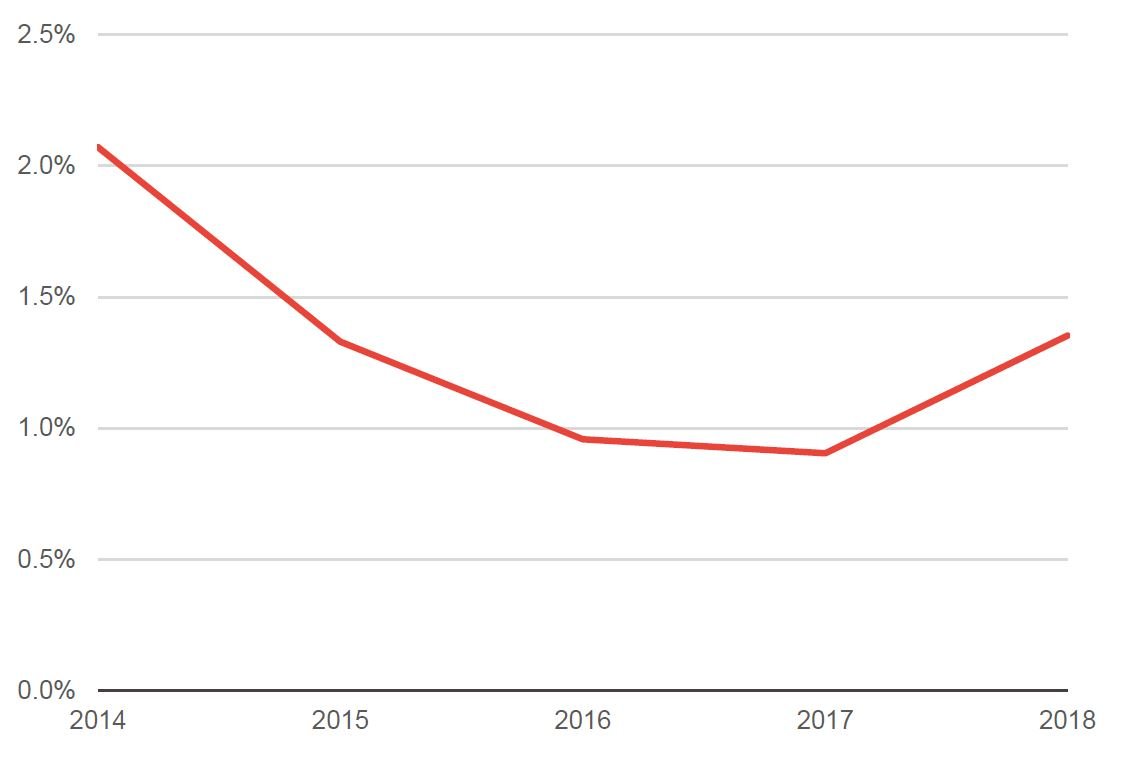Key trends in aid targeting persons with intellectual disabilities
DI’s Dean Breed outlines three key trends in how ODA is targeting persons with intellectual disabilities – considering what this means for recipients and what donors can do to improve the lives of persons with intellectual disabilities.
Persons with disabilities have a huge amount to contribute to society and the economy, however attitudinal, environmental and institutional barriers mean they are often excluded. Persons with intellectual disabilities can even be marginalised within the disability community and therefore may face additional barriers. To better understand whether the needs of persons with intellectual disabilities are being met, Development Initiatives (DI) worked with Inclusion International , an international network of people with intellectual disabilities and their families, to investigate the targeting of official development assistance (ODA, also referred to as ‘aid’) to persons with intellectual disabilities.
In February 2020, the Organisation for Economic Co-operation and Development (OECD) Development Assistance Committee (DAC) introduced, for the first time, a marker for aid projects that are targeted to the “ inclusion and empowerment of person with disabilities ”. This metric represented a major shift towards improving transparency and the potential for coordination in funding to disability inclusion. However, the marker is used voluntarily, not available historically and applied in different forms by donors. Also, it does not allow insight into which groups of persons within the disability community are being targeted.
To complement the OEDC DAC marker, in July 2020, DI developed a keyword methodology and factsheet that provided a broader and historical view of aid to disability inclusion. In collaboration with Inclusion International, DI has further adapted the keyword methodology to specifically assess the targeting of persons with intellectual disabilities.
Our analysis reveals three key trends in ODA targeting persons with intellectual disabilities:
- ODA targeting persons with intellectual disabilities has not kept up with overall increases in disability-relevant ODA.
- Large proportions of ODA targeting persons with intellectual disabilities come from a small number of donors.
- Projects focused on persons with intellectual disabilities are increasingly intersecting with efforts to improve gender equality.
ODA targeting persons with intellectual disabilities has not kept up with overall increases in disability-relevant ODA
The proportion of ODA going to ‘disability-relevant’ projects (that is, projects marked as having a principal or significant disability component ) has been steadily increasing in recent years. However, the same increase has not been observed in targeting of persons with intellectual disabilities. The proportion of disability-relevant aid targeting persons with intellectual disabilities halved between 2014 and 2017 with only a small recovery into 2018 (Figure 1). While disability-relevant aid increased from 1.5% of overall ODA in 2015 to 1.9% in 2018, a decreasing proportion of that was targeting persons with intellectual disabilities.
Figure 1: Aid targeting persons with intellectual disabilities has consistently formed a minor fraction of all disability-relevant aid
ODA targeting persons with intellectual disabilities as a share of all disability-relevant ODA, 2014–2018
Large proportions of ODA targeting persons with intellectual disabilities come from a small number of donors
There are a few donors who consistently provide ODA targeting persons with intellectual disabilities. Finland, US and the EU were consistently among the top five donors from 2014 through 2018; however, their total annual disbursements do not exceed US$15 million. In comparison, the UK featured in the top five in 2014 at US$22.0 million and in 2018 at $US19.7 million, dropping out of the top five for the adjoining years. These annual disparities between the volume and proportion of ODA that large donors are providing cause fluctuations in the amount of aid being targeted to persons with intellectual disabilities year on year.
Figure 2: A few large donors provide the majority of aid targeting persons with intellectual disabilities
Top five donors of ODA targeting persons with intellectual disabilities (US$ millions), 2014–2018

| Ranking | Donor, 2014 | Value (US$ millions), 2014 | Donor, 2015 | Value (US$ millions), 2015 | Donor, 2016 | Value (US$ millions), 2016 | Donor, 2017 | Value (US$ millions), 2017 | Donor, 2018 | Value (US$ millions), 2018 |
|---|---|---|---|---|---|---|---|---|---|---|
| 1 | UK | 22.0 | Finland | 10.6 | US | 5.9 | Finland | 8.1 | UK | 19.7 |
| 2 | Finland | 14.7 | US | 5.4 | Finland | 5.7 | United States | 4.8 | US | 7.4 |
| 3 | EU institutions | 5.4 | Canada | 5.4 | Germany | 3.9 | EU institutions | 3.6 | Sweden | 5.1 |
| 4 | Korea | 1.7 | EU institutions | 2.1 | EU institutions | 3.8 | Korea | 3.1 | EU institutions | 3.5 |
| 5 | US | 1.4 | Norway | 1.6 | Australia | 1.8 | Italy | 2.8 | Finland | 2.3 |
Source: Development Initiatives based on OECD DAC CRS.
Projects focused on persons with intellectual disabilities are increasingly intersecting with efforts to improve gender equality
Women and girls with disabilities face additional discriminations and so promoting gender equality is an important factor in projects targeting persons with intellectual disabilities. In addition to the newly created marker for disability, the OECD DAC provide a marker for projects or programmes which have a principal or significant focus on promoting gender equality . In alignment with trends seen in funding to disability inclusion in general, there is a large overlap between aid targeting persons with intellectual disabilities and gender equality. And, the size of this intersection has increased since 2015. In 2018, over 80% of projects focused on persons with intellectual disabilities had a principal or significant gender equality component – with over half of that being principal, demonstrating a positive trend for consideration of gender within projects relevant to persons with intellectual disabilities.
Figure 3: Aid projects which focus on persons with intellectual disabilities overlap significantly with those which focus on gender equality
Proportion of ODA targeting persons with disabilities also focused on gender equality, 2014–2018

| Year | Principal focus on gender | Significant focus on gender | No focus on gender | Not screened against gender marker |
|---|---|---|---|---|
| 2014 | 1% | 78% | 20% | 1% |
| 2015 | 3% | 52% | 43% | 1% |
| 2016 | 5% | 52% | 42% | 1% |
| 2017 | 2% | 63% | 34% | 1% |
| 2018 | 50% | 33% | 16% | 1% |
Source: Development Initiatives based on OECD DAC CRS.
Note: Not screened refers to projects where it is not specified if there is a principal, significant or no gender component.
What does this mean for recipients of ODA targeting persons with intellectual disabilities?
Funding to disability-focused projects has been increasing but intellectual disability-focused projects have not benefited from this trend. For ODA to effectively improve the lives of persons with intellectual disabilities, donors should ensure:
- ODA is targeted equitably to allow it to proportionally support persons with intellectual disabilities
- targeting of persons with intellectual disabilities is mainstreamed across donor programmes to ensure effective inclusion
- gender continues to be considered across programmes targeting persons with intellectual disabilities.
To read more about this analysis please see Inclusion International’s report Excluded from the Excluded: People with Intellectual Disabilities in (and out of) Official Development Assistance .
Our work on data to support disability inclusion is conducted under the Inclusive Futures initiative, a consortium of 16 partners led by Sightsavers and wholly funded by UK aid from the UK government.
Related content
Generating disability statistics: Models of disability measurement, history of disability statistics and the Washington Group Questions
This background paper examines how data collection on disability has evolved over the last 200 years, as well as the challenges involved in generating disability statistics, and takes a detailed look at the Washington Group Questions.
Uganda's disability data landscape and the economic inclusion of persons with disabilities
This report looks at the landscape of data on disability in Uganda – summarising what data on persons with disabilities is available, who produces and uses it, and how – as well as what this means for the economic inclusion of persons with disabilities.
Disability-inclusive ODA: Aid data on donors, channels, recipients
How much ODA goes to projects focused on the inclusion and empowerment of persons with disabilities? Read analysis of the scale and channels of aid.
